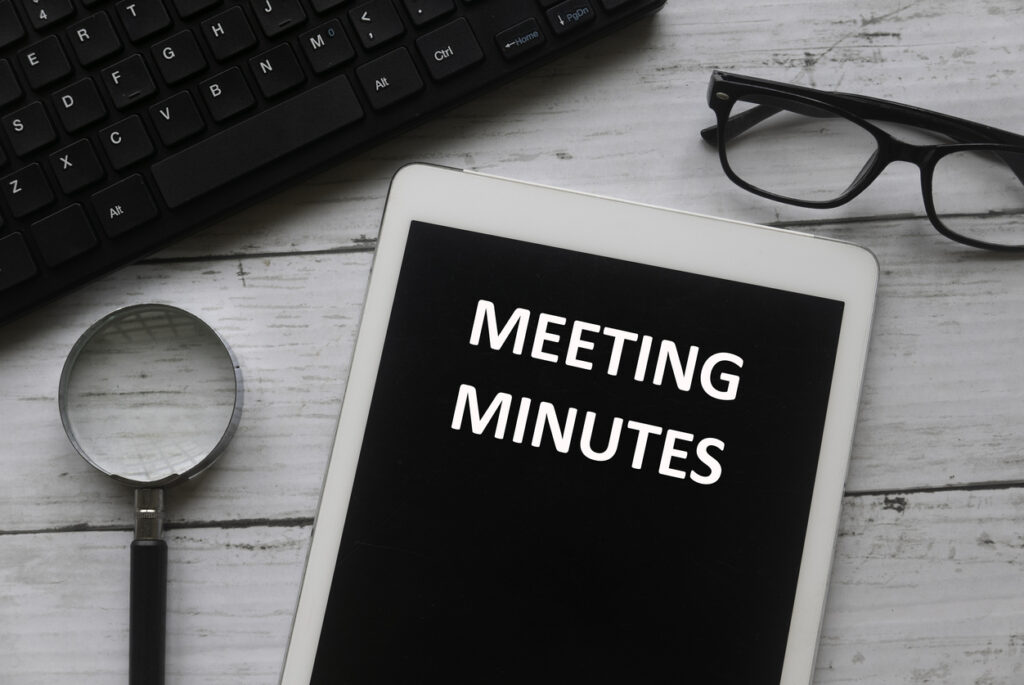Most people have a decidedly neutral, if not utterly disinterested, relationship with the minutes that are taken at a meeting. And understandably so. Taking meeting minutes seems pretty much like a box-checking exercise that’s necessary but mildly annoying. Taking good minutes does have solid benefits, though, and there definitely are ways to keep the process simple and relatively painless. Here are three reasons to take good minutes.
1. The Legal Reason
This one is simple: The law expects tax-exempt organizations to keep an official record of the proceedings of the group’s board, its committees, and its members.
So, if your organization is a charity, foundation, civic organization, union, trade association, or sorority—just to name a few examples—you should be keeping an official record of the actions taken in your meetings—i.e., minutes.
From a federal law perspective, the IRS expects this. IRS Form 990—the “tax return” that tax exempt organizations file each year—includes questions about how the organization is governed and managed. One of the questions is, “Did the organization contemporaneously document the meetings held or written actions undertaken during the year by…[t]he governing body [and] [e]ach committee with authority to act on behalf of the governing body?”
A little extra info… The instructions that the IRS has published about this question say that any means of documentation permitted by state law counts here—as long as the documentation states the action taken, who took it, and when they took it.
And as far as the timing? The IRS instructions also clarify that “contemporaneous” means by the next meeting or within 60 days.
As for state law… Most, if not all, states have a provision that addresses the recordkeeping requirements for non-profit organizations, and you should check your state’s laws so that you know what’s required. Usually, you can find those laws through the Secretary of State or legislature website for your state.
2. The Forward-Looking Reason
Beyond the legal reason, taking minutes is an excellent way to prepare for questions from potential donors, investors, and interested or disgruntled members.
Whether or not your organization is ever audited by a governmental entity, you will have individuals who are interested in seeing your minutes because they want to learn and understand what has happened at your meetings. Being able to locate minutes that are properly taken is key not only to communicating the legitimacy of your organization and its meetings, but also to being able to easily put to bed any suspicions from members about whether a meeting was (1) properly called and held, and (2) the actions were validly taken.
As you work to make sure you’re compliant, here’s a quick recap on what minutes should generally include:
- name of the group that’s meeting (governance committee, board, membership, etc.)
- type of meeting (regular, special, etc.)
- date, time, and place of the meeting
- statement that the chairman and secretary were present (or if not, who did their duties)
- actions taken during the meeting
- advance notice rehoquired for specific motions
3. The Operational-Strategy Reason
Here’s a third reason to love minutes: Minutes are an awesome and easy way to remember what happened at a meeting, and to know what’s coming next.
A quick review of the last meeting’s minutes can tell you…
- the details of that big motion the group passed
- the long-range strategic plan you approved
- the vote totals on the motion that failed
- the money allocated for a major tech purchase
- the deadline for future committee and consultant reports
- which motions were postponed
- ….and more
Don’t knock minute-taking. It’s a simple way to keep track of what you’re doing as a group and prevent problems.
Where to Learn More


